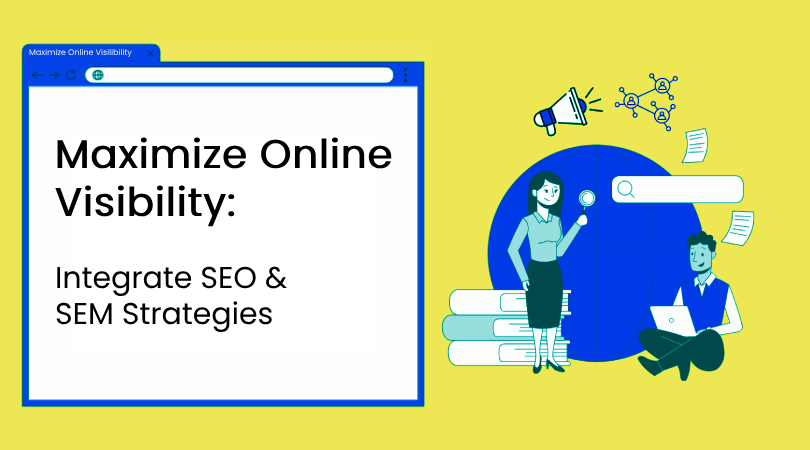In today’s competitive digital landscape, achieving a robust online presence is crucial for any business. Search Engine Optimization (SEO) and Search Engine Marketing (SEM) are two powerful strategies that can significantly enhance your website’s performance. While they have distinct roles, leveraging them together can lead to remarkable results in terms of visibility, traffic, and cost-effectiveness. In this blog post, we’ll explore how the synergy between SEO and SEM can improve your site’s overall performance and optimize your budget.
Understanding SEO and SEM
Table of Contents
Before diving into their combined benefits, it’s essential to understand what SEO and SEM entail:
What is SEO?
SEO involves optimizing your website to rank higher in organic search engine results. This includes on-page elements like keyword optimization, meta tags, content quality, and technical aspects such as site speed and mobile-friendliness.
What is SEM?
SEM encompasses paid strategies to increase visibility on search engines through ads. This includes Pay-Per-Click (PPC) advertising where you bid on keywords to display ads at the top of search engine results pages (SERPs).
Differences Between SEO and SEM
Understanding the key differences between SEO and SEM can help you decide which strategies to implement for your business’s growth. Here’s a comparison:
| Aspect | SEO | SEM |
| Cost | Generally free, but may involve costs for tools | Paid strategy (e.g., PPC ads) |
| Time to Results | Takes longer to see results (months) | Immediate visibility once ads are live |
| Longevity | Long-term benefits; continues to drive traffic | Short-term; stops driving traffic when ads stop |
| Click-Through Rate | Higher trust and credibility with users | Can achieve high CTR due to ad placement |
| Traffic Quality | Typically higher quality; organic searches | Can be highly targeted based on keywords |
| Control over Display | Less control over where you appear in SERPs | Full control over ad placement |
The Synergy Between SEO and SEM
1. Enhanced Keyword Strategy
- Identify High-Performing Keywords: Use data from PPC campaigns to identify high-performing keywords which can then be targeted in your organic content strategy.
- Fill Gaps: Discover gaps where organic content may not be performing well but could benefit from paid ads.
2. Improved Click-Through Rates (CTR)
- Reinforce Brand Visibility: Seeing both an ad and an organic listing increases brand trustworthiness.
- Dominating SERPs: Occupying both paid and organic spaces increases the likelihood of clicks.
3. Better Budget Allocation
- Cost-Efficiency: Identify keywords that are expensive in PPC but perform well organically; focus paid efforts elsewhere.
- Performance-Based Spending: Adjust spending based on seasonal trends or campaign performance metrics derived from combined data.
Practical Steps to Integrate SEO & SEM
Step 1: Conduct Comprehensive Keyword Research
Step 2: Optimize On-Site Content
- Use primary keywords in titles, headers, meta descriptions.
- Include secondary keywords naturally within the body text.
Step 3: Launch Targeted PPC Campaigns
- Monitor performance regularly.
- Adjust bids based on keyword performance analytics.
Step 4: Analyze Data Consistently
- Compare CTRs between organic listings vs paid ads.
- Analyze conversion rates from different sources.
Step 5: Refine Strategies Based on Insights
- Reallocate budgets towards better-performing channels.
- Update existing content with new high-performing keywords discovered via PPC campaigns.
Case Study: Leveraging SEO and SEM for “Things to Do in Singapore”
Background
SEO Optimization Strategies
1. Keyword Research
- Best things to do in Singapore
- Family-friendly activities in Singapore
- Top attractions in Singapore
2. On-Page Optimization
- Title Tags & Meta Descriptions: Included primary keywords like “Top Things To Do In Singapore” within title tags and meta descriptions.
- Header Tags: Used H1 tags for main topics (e.g., “Best Things To Do In Singapore”) and H2/H3 tags for subtopics (e.g., “Family-Friendly Activities”).
- Content Quality: Created high-quality, informative content that provides value, including detailed guides, tips, images, and videos.
- Internal Linking: Linked related articles within our site (e.g., linking from “Best Restaurants” page to “Things To Do”).
3. Technical SEO
- Improved site speed by compressing images.
- Ensured mobile-friendliness through responsive design.
- Fixed broken links and improved site architecture.
SEM Campaign Strategies
1. Ad Creation
- Headlines like “Explore Top Things To Do In Singapore – Book Now!”
- Description lines highlighting unique selling points (USPs), such as exclusive deals or family-friendly options.
2. Keyword Bidding
- Focused primarily on keywords with commercial intent (e.g., “Book Tours In Singapore”).
3. Monitoring & Adjustment
- Adjusted bids based on CTRs.
- Paused low-performing ads while increasing budget allocation towards high-performing ones.
Results Achieved
- Organic traffic increased by 40% due mainly due improvements made via targeted keyword optimizations around primary term (“things-to-do-in-Singapore”) along relevant long-tails discovered during initial research phase itself!











Comment as a guest